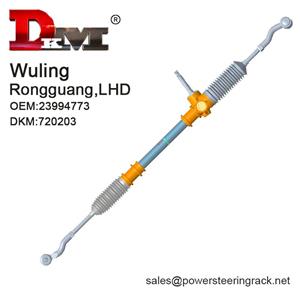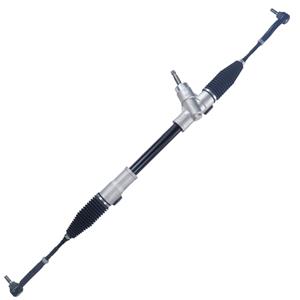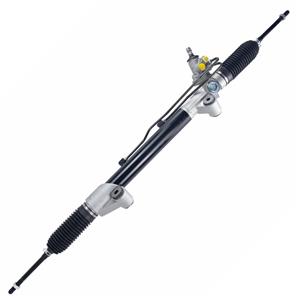How to know if there is air in the hydraulic power steering rack?
Hydraulic power steering system (HPS) plays a vital role in modern cars. It provides drivers with a light steering experience through the action of hydraulic oil. In the hydraulic steering system, hydraulic oil is the medium for transmitting power, and the steering rack is the core component that converts hydraulic energy into mechanical force. A normally working, air-free hydraulic steering system can complete the steering task efficiently and smoothly.
However, if air enters the hydraulic power steering rack, it may cause a series of problems, including steering difficulties, increased noise, and even possible damage to the hydraulic components. Therefore, knowing how to judge whether there is air in the hydraulic power steering rack has become an important task for every car owner and maintenance personnel.
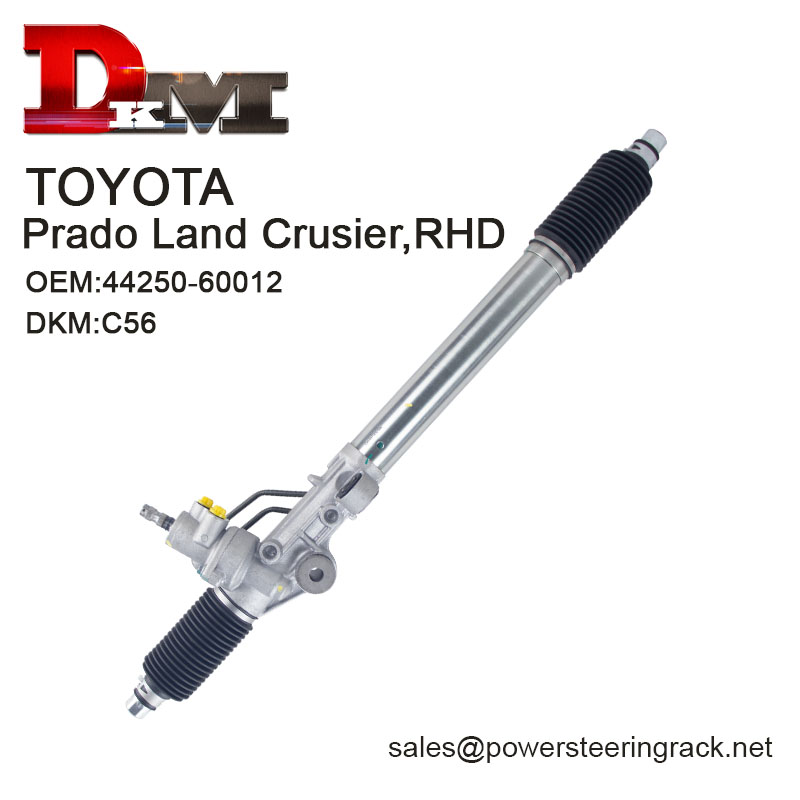
How does the hydraulic power steering system work?
The hydraulic power steering system is mainly composed of a hydraulic pump, hydraulic oil, steering rack, pipes, oil tanks, and related seals and valves. The hydraulic pump obtains power from the engine, sucks hydraulic oil from the oil tank, and pressurizes it to the steering rack. When the driver turns the steering wheel, the hydraulic oil is pumped to the steering rack through the pipe under the action of the pump, and the generated hydraulic pressure helps the driver turn the wheel more easily.
The design of the hydraulic power steering system requires that the hydraulic oil can circulate in the system to maintain appropriate pressure and flow. If there is air in the system, the flow and pressure transmission of the hydraulic oil will be disturbed, which will affect the steering performance.
What are the reasons for the hydraulic power steering rack?
The reasons for the appearance of air in the hydraulic power steering rack are usually as follows:
· Hydraulic oil is lower than the minimum oil level: Low hydraulic oil may cause air to enter the system through the oil pipe, oil pump or seal.
· System leakage: If there is a leak in the pipes, joints, seals and other parts of the hydraulic system, air will enter the system.
· Hydraulic oil has not been replaced for a long time: Hydraulic oil may deteriorate during long-term use, and the moisture and impurities in the oil can easily cause foam to form and cause air to mix in.
· Incomplete exhaust of the pipeline: When repairing, replacing hydraulic oil or cleaning the hydraulic system, if the gas in the pipeline is not completely discharged, air will also remain in the system.
·Failure of hydraulic pump or steering rack: Failure of hydraulic pump (such as cracks in the pump body, damaged seals) or poor internal sealing of the steering rack may cause air to enter the system.
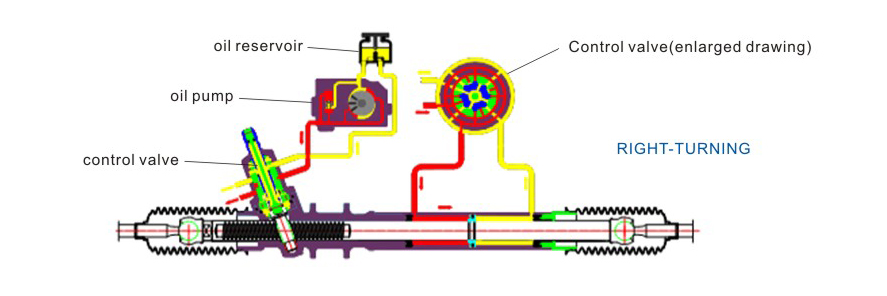
What are the symptoms of air in the hydraulic power steering rack?
Air in the hydraulic power steering rack will directly affect the normal operation of the steering system. When the following symptoms occur, it can be preliminarily judged that there may be air in the system:
1. Abnormal noise when steering
When there is air in the system, abnormal noises such as "squeaking" or "whistling" may be emitted when the hydraulic oil flows. When air is compressed and expanded by the hydraulic pump in the system, bubbles and foam are often generated. These bubbles will cause abnormal sounds when passing through the steering rack, especially at low speeds or when parking. The noise problem not only affects the driving experience, but may also mean that the steering system is already in an abnormal state.
2. Sluggish or difficult steering response
The hydraulic steering system relies on the flow of hydraulic oil to transmit power. If there is air in the system, the hydraulic oil cannot stably provide sufficient power support, resulting in heavy or slow response when steering, especially when steering at low speeds or parking, the owner will obviously feel the difficulty of steering.
3. Steering wheel vibration or shaking
Air entering the hydraulic system may cause unstable flow of hydraulic oil, thus affecting the movement of the steering rack. Once the steering wheel vibrates or shakes, especially during steering, it may also be a sign that there is air in the hydraulic power steering rack.
4. Steering wheel cannot be turned or is off-center
When there is air in the hydraulic system, the steering wheel's power assistance effect is affected. In some cases, the driver may find it difficult to turn the steering wheel or the steering wheel cannot smoothly return to the center position during steering. This situation usually occurs at low speed or parking, especially during emergency steering.

How to know if there is air in the hydraulic power steering rack?
To understand whether there is air in the hydraulic power steering rack, first you need to observe and judge some obvious signals, and secondly you can use some professional tools and methods to further confirm. The following are several commonly used judgment methods:
1. Check the color and cleanliness of the hydraulic oil
The color and cleanliness of the hydraulic oil are important bases for judging the status of the hydraulic system. Normal hydraulic oil should be transparent or slightly yellow-green. If the oil is found to be turbid, discolored or foamy, it may mean that there is air or moisture in the hydraulic power steering rack.
Check the cleanliness of the hydraulic oil. You can observe the condition of the hydraulic oil from the oil cap and replace the oil in time to avoid further influence of air and impurities on the system.
2. Observe the noise of the steering system
With the engine running and the steering system turned on, listen carefully to the working sound of the hydraulic system. If there is an obvious "whistle" or "squeak", this may be a sign of air mixed in the hydraulic oil. Especially when the vehicle speed is low or parked, air may cause bubbles to form and produce abnormal noise.
3. Check the pressure performance of the steering system
The hydraulic power steering rack provides pressure through the hydraulic pump to maintain the stability of the oil flow. Using tools such as pressure gauges, you can detect the pressure of the steering system. If there is too much air in the system, it may cause pressure fluctuations or abnormalities, resulting in slower or unstable response when steering. By detecting the pressure, you can intuitively understand the flow state of the hydraulic oil.
4. Exhaust process
When changing the hydraulic oil, cleaning or repairing the system, be sure to exhaust it thoroughly. Exhaust is an effective way to ensure that there is no air in the hydraulic system. In order to completely remove the air in the system, the owner can start the engine and turn the steering wheel repeatedly to circulate the hydraulic oil in the system and exhaust the air in the system through the bubble escape valve or exhaust port.
This process takes a certain amount of time to ensure that the bubbles are completely released to avoid residual air affecting the operation of the system.
5. Check the leak point of the hydraulic system
If the hydraulic power steering rack leaks, air may enter the system from the leak, causing air to mix with the hydraulic oil. Check whether the various joints, pipes, seals, etc. in the system are loose or damaged to ensure that all parts are intact and leak-free.
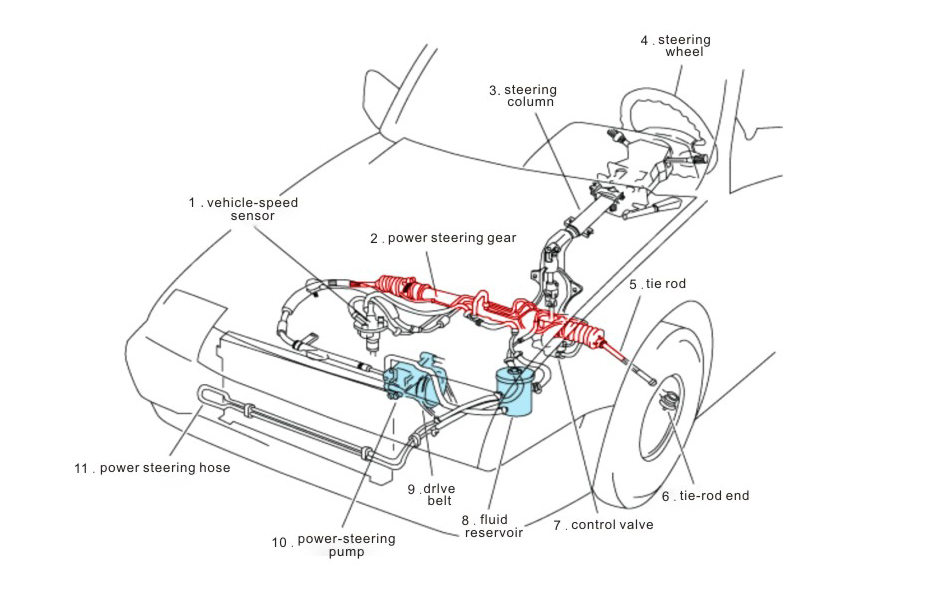
How to remove air from the hydraulic power steering system?
If it is determined that there is air in the hydraulic power steering rack, the owner should take measures to remove the air in the system as soon as possible. Here are some common ways to remove air:
1. Perform exhaust operation
By starting the engine and turning the steering wheel repeatedly, the hydraulic oil can flow in the system to help exhaust the air in the system. It is recommended to operate with the engine off until the steering wheel can be turned smoothly without obvious resistance.
2. Check the fluid and add an appropriate amount of hydraulic oil
If the hydraulic oil is too low, air may enter the system. During the exhaust process, you can check the oil level in time to ensure that the hydraulic oil is within the specified range. Adding appropriate hydraulic oil will help speed up the exhaust of air and restore the normal function of the hydraulic system.
3. Professional exhaust tools
For some high-end vehicles or special models of hydraulic steering systems, professional exhaust tools can be used for gas exhaust. Such tools can help to remove air from the hydraulic system more efficiently and thoroughly.
What industries and vehicle models do you cater to?
DKM specializes in manufacturing hydraulic and rack-and-pinion steering systems tailored to a broad range of global vehicle brands. We supply parts for European, American, Japanese, Korean, and Chinese models—including Toyota, Honda, Mitsubishi, Hyundai, Buick, VW, Isuzu, Chery, JAC, Brilliance, and many others.
As a professional steering rack supplier, we deliver customized, OEM-quality steering components at low prices, with options for bulk purchasing, competitive quotes, and promotional discounts for distributors or dealerships across China and abroad.

